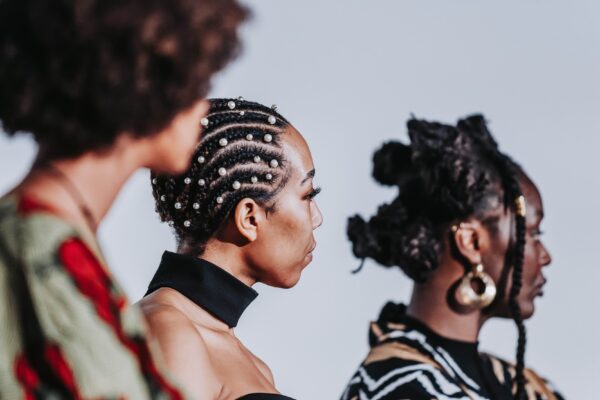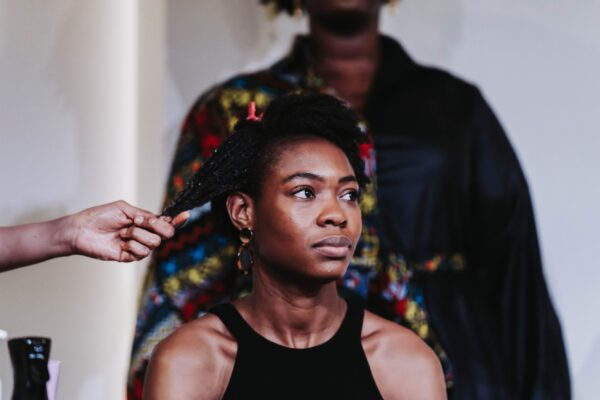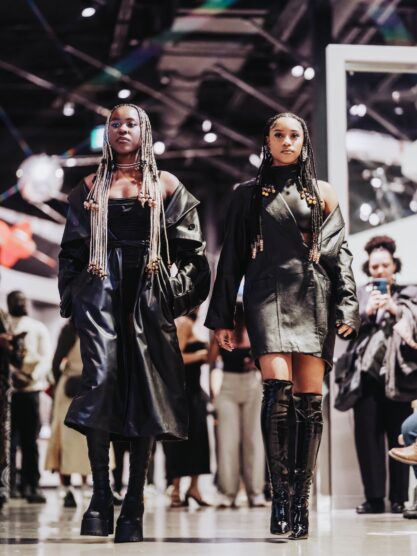Crépu: Our DNA Depicts Black Hair in All Its Glory
When Sharlène Clarke, founder of Hors Pair Social, an Ottawa Black social group, approached Sandra Ngenge Dusabe, founder of The Moving Art Gallery, with the idea of a Black hair art show, she was hesitant. “I thought that something only about hair would be too much,” she admits, but Dusabe was enthusiastic. They collaborated, using Dusabe’s curatorial background and Clarke’s event management expertise to create Crépu: Our DNA last year. Crépu (meaning curly or kinky) is a meditation on Black hair in all its forms, through education, visual arts, and innovation. “When you look at representations of Black folk in the public, there isn’t a lot of afro-textured hair that is well maintained and taken care of,” Dusabe says.
Earlier this month, the informative event returned.
The first event of the night, Hydrating Tight Curls and Coils, was a live hair workshop by Ottawa hair salon Curly Hair Designs. The founder, Paula Whitelocke, was accompanied on stage by a few models and her colleague Rhea Jemmott. During Whitelocke’s explanation of common Black hair myths, she explained that though hair oils are culturally relevant, they block our hair from retaining moisture so are detrimental to our hair health. Whitelocke also reminded us that hair care is self-care and to explore our natural hair patterns.


This is easier said than done. “A lot of the Black community has experienced trauma when it comes to getting their hair done or experiences as a child growing up,” Jemmott said. This hinders education about hair care and trust in hair professionals, which can last into adult years. One prevalent stereotype is that Black hair is hard to take care of, but Jemmott disagreed: it’s “not hard to take care of, but it requires time, effort and energy.” She emphasized the need for more support for curly hair salons to bridge this knowledge gap. “You have to be able to commit to prioritizing your self-care.”
The Hair Art Runway was the event du jour, if Crépu’s poster is any indication. The runway was divided into three sections where three local hair artists, Empress Charifa, Solit Silks, and DRS Anointed Hair Spa, displayed varying hairstyles and sculptures on their models. The audience erupted into oohs and aahs as each model revealed a creation more intricate than the last. Themes and attire varied from traditional to alternative, but all looks were undeniably regal.


The rest of the event consisted of talks and presentations. First, Sarah Jaworski and Alexa Lepera, assistant curators at Ingenium, a group of Ottawa science and technology museums, explained how Crépu piqued their interest after attending last year. After recognizing a gap in the collection showcasing domestic technologies involved in Black Canadian hair culture, they pitched the theme to the museum organizers.
Other presentations featured a presentation by local nonprofit, Atelier en Boucle, performances by singer DORESSA and spoken word artist MayaSpoken, and a preview of the short film Nid d’oiseau.
Crépu and its community of supporters are prime examples of what’s possible investing in Black creativity. Canada has slowly erased Blackness from its history, Dusabe says, “subsequently forcing us to create spaces on our own.” Dusabe says.
To keep this work going, it’s important to support local organizations such as these not just during Black History Month but year round, through attendance, donations, and word of mouth.
Photography by Curtis Perry.




